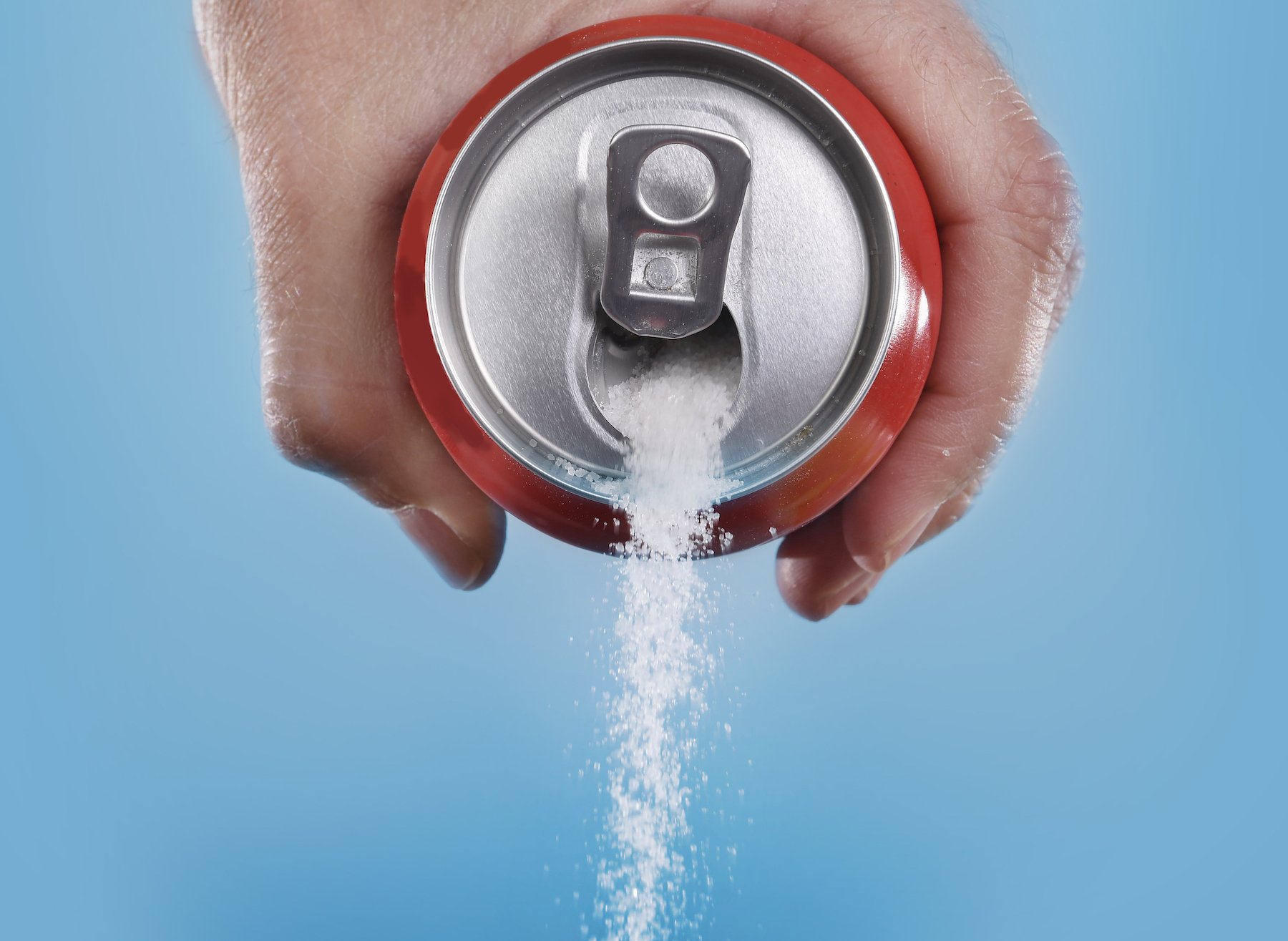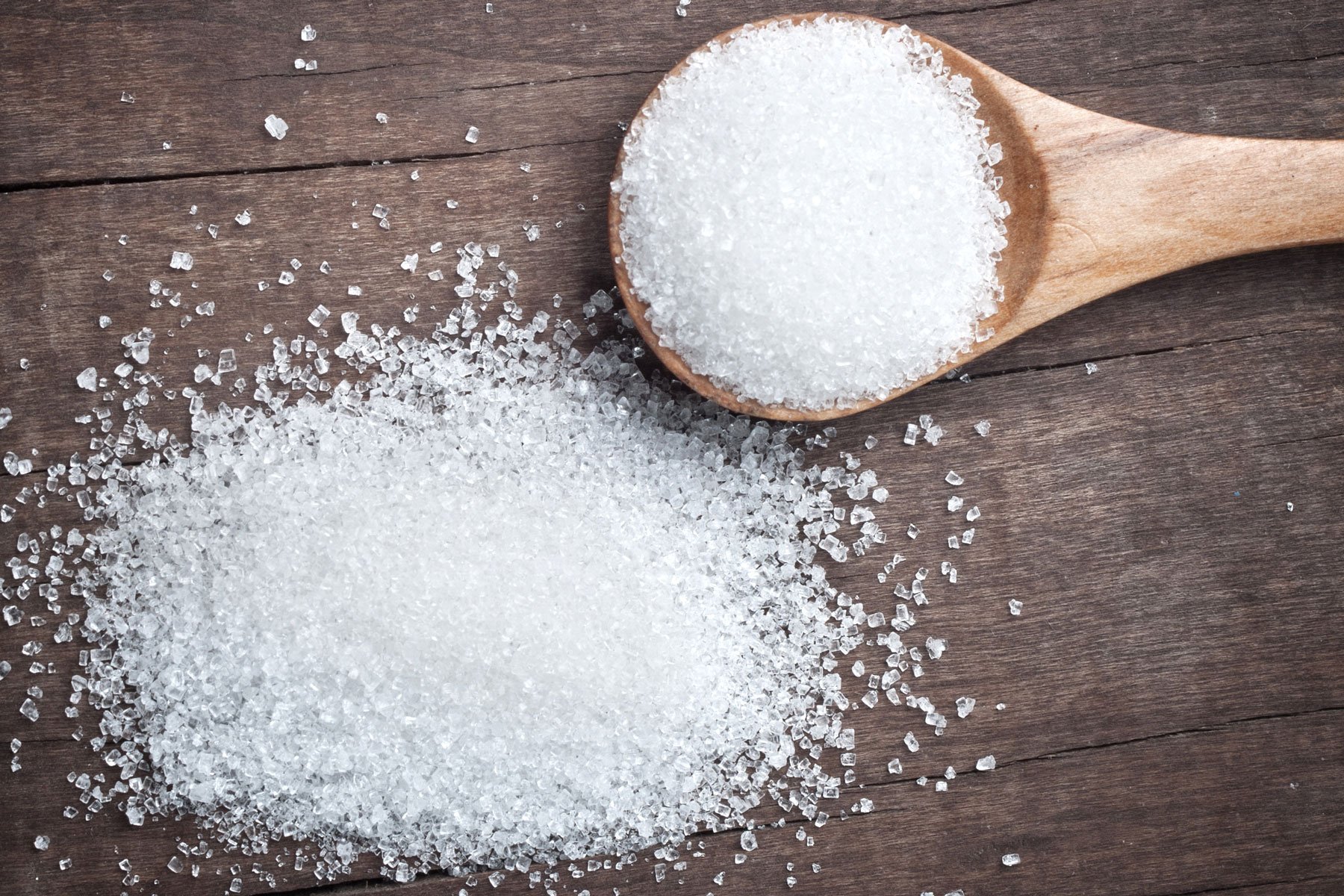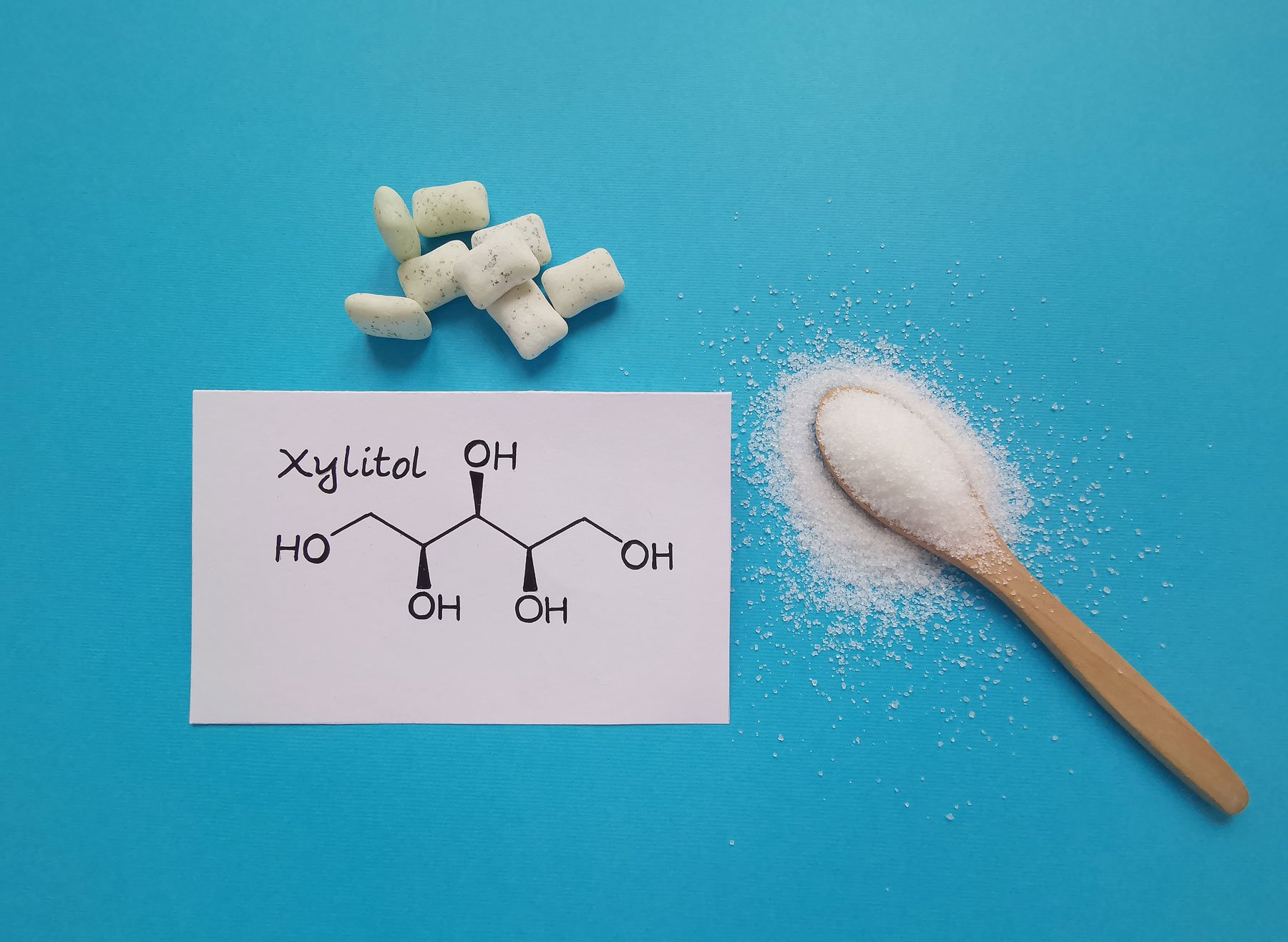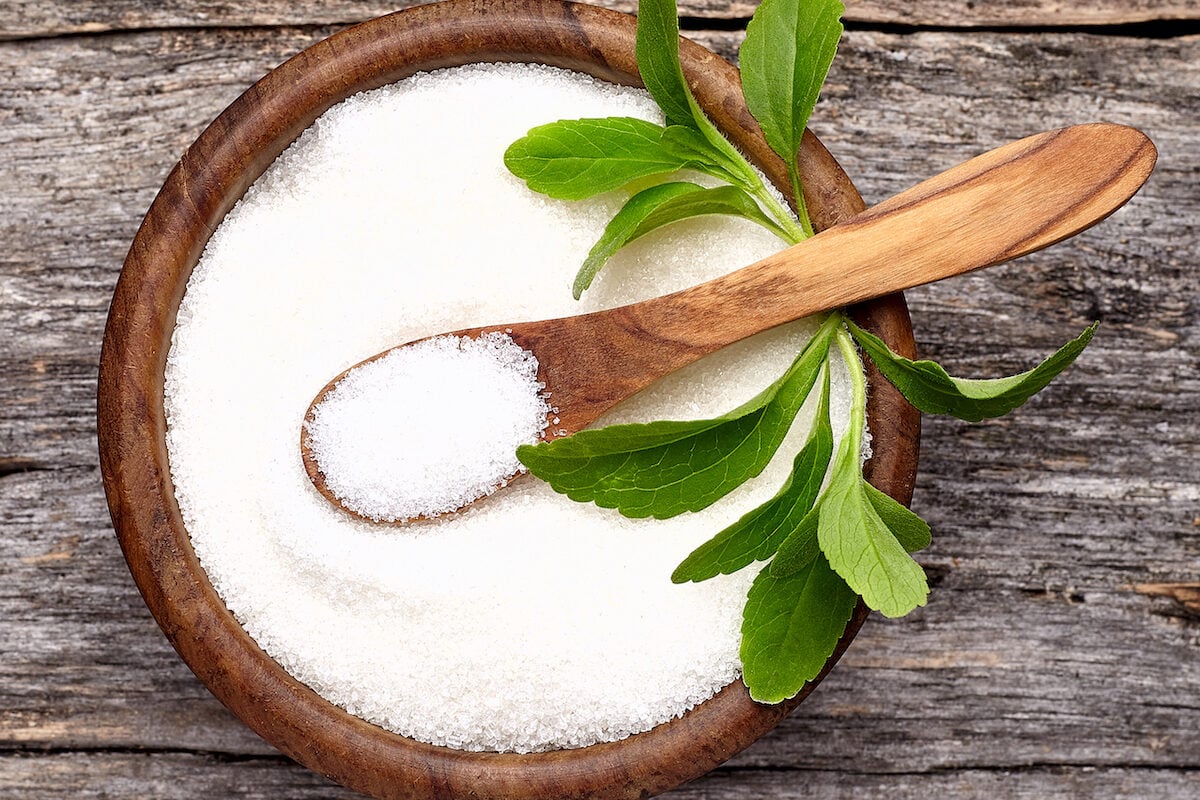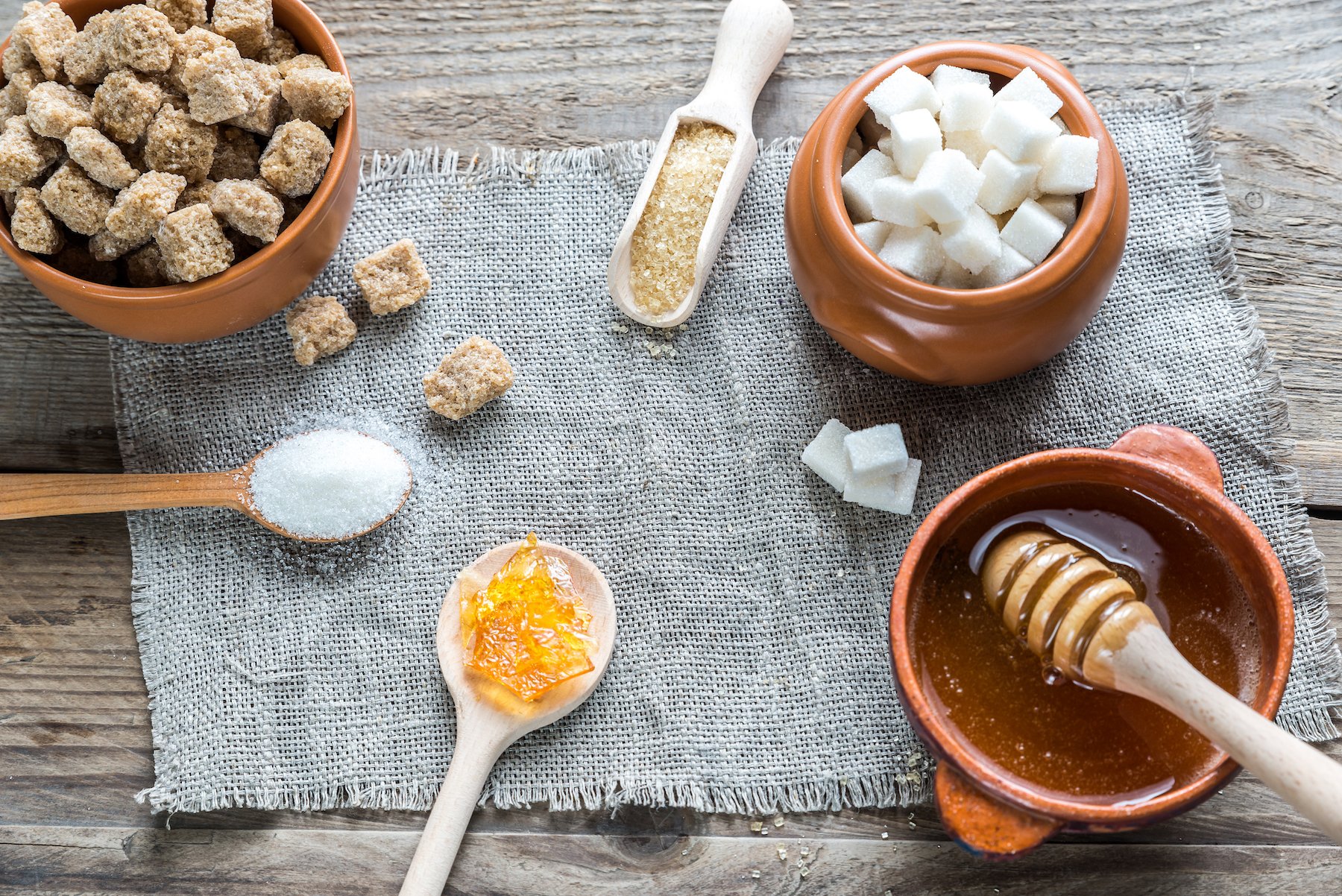Minimizing added sugar in your diet is crucial to improving your overall health. But it can be confusing to keep track of all the different sugars out there and even more confusing to understand their differences (glucose vs. fructose, lactose vs. sucrose).
This article will discuss the four most common sugars: glucose, fructose, sucrose, and lactose. We’ll focus on how the body processes each and how they affect our metabolic health.
What is Sugar?
Chemically speaking, a sugar is a type of carbohydrate. Single-molecule sugars follow the general formula Cn(H2O)n. The C stands for carbon, and H2O, of course, is water. So a “carbo-hydrate” means “carbon linked with water” in a specific ratio: one carbon molecule for every water molecule.
Another word for sugar is “saccharide,” which you’ll usually see as part of a larger word identifying types of sugar. A monosaccharide is a one-molecule sugar, and a disaccharide is a sugar made of two linked sugar molecules.
Finally, another easy way to identify a sugar is to look for words ending in “-ose.” That includes the four we’re talking about here, as well as galactose and maltose.
Glucose
Glucose consists of a single molecule, making it a monosaccharide or single sugar. It comprises 6 carbon, 12 hydrogen, and 6 oxygen atoms (C6, H12, O6). Its name comes from “gleukos” (Greek for “sweet wine”).
Glucose occurs in pure form in honey, golden syrup, dried fruits like figs and dates, and in small amounts in some fruits and vegetables, but we encounter it most often as part of more complex sugar molecules. Virtually all carbohydrates we eat—including all-natural sugars—ultimately break down or convert into glucose.
In other words, glucose is the basic building block of most natural sugars (fructose synthesis in plants being one exception). It’s found in all plants and animals, often in other carbohydrate forms like sucrose, lactose, and starch.
Glucose is the primary source of energy for all living things, including us, at the cellular level. We often measure and discuss glucose in the blood, where it regularly circulates to reach cells throughout the body. It can also be stored as glycogen in organs, including the muscles and liver. In this context, we might use glucose and blood sugar interchangeably.
Our body has a complex system for processing and regulating glucose. In simple terms, we regulate the glucose level in our blood through a constant tug-of-war between two hormones produced by the pancreas: insulin and glucagon. Insulin removes glucose from the blood, while glucagon helps break down glycogen to put glucose into circulation.
However, consistently high blood glucose levels can pose a severe health risk. Hyperglycemia triggers a flood of insulin to remove the excess glucose from the blood. Over time, consistently high insulin levels can cause cells to stop responding appropriately to insulin, a condition called insulin resistance. Insulin resistance is among the most common health problems in the U.S. and plays a role in most chronic conditions, including heart disease, diabetes, infertility, and Alzheimer’s disease. It also factors into weight gain.
Chronically high glucose can also lead to inflammation (overactivation of the body’s immune response), oxidative stress (an overabundance of harmful free radicals), metabolic syndrome, and other health problems.
In the short term, hyperglycemia can cause oxidative damage and apoptosis (cell death) in neurons, as well as a subsequent blood sugar crash (or hypoglycemia) that can leave us feeling sluggish or foggy.
Our bodies store excess glucose first as glycogen and secondarily as fat. This is one of the differences between glucose and fructose, which we’ll discuss next.
Related article:
Fructose
Fructose is a simple sugar that naturally occurs in fruits and vegetables. It’s also found in sucrose, or table sugar, and in many processed foods—including fruit juice and soda—in the form of high-fructose corn syrup (HFCS), a manufactured sweetener found in many processed foods.
Like glucose, fructose is a monosaccharide—it has all the same atoms as glucose but arranged in a different structure. As a result, the body processes it differently.
Fructose, vs. glucose, which is processed and stored throughout the body, is metabolized mainly in the liver, primarily by an enzyme called fructokinase. Also, unlike glucose, fructose doesn’t raise blood sugar or trigger insulin release. But that doesn’t mean fructose is good for you. In the process of metabolizing fructose, the body burns energy. Ingesting an excessive amount of fructose can cause a rapid depletion of the cells’ energy stores, leading to oxidative stress, inflammation, and mitochondrial dysfunction.
Excess fructose consumption can also cause the liver to turn the sugar into fat, known as de novo lipogenesis (DNL). It can reduce the body’s fat-burning rate, leading to a buildup of fat in the liver, which is thought to drive non-alcoholic fatty liver disease (NAFLD), a significant cause of liver disease worldwide.
One crucial feature of NAFLD is hepatic, or liver-based, insulin resistance, which leads to Type 2 diabetes. While fructose doesn’t directly affect insulin, fructose metabolism can still spur insulin resistance indirectly. And there’s evidence from animal models that fructose may interfere with insulin signaling, directly causing hepatic insulin resistance.
Too much fructose also produces byproducts that can be dangerous in high concentrations, including uric acid, triglycerides, and methylglyoxal.
When consumed in the form of whole fruits and vegetables, the fiber in these foods slows the absorption of fructose. It’s best to limit fructose intake to whole foods and avoid added fructose—especially in liquid forms, such as fruit juice or soda. HFCS has also been found to alter the gut microbiome in harmful ways relative to fructose.
If you have an inherited inability to digest fructose or any form of irritable bowel disease, ingesting large amounts of fructose may cause pain and harm your digestive system. If this is the case for you, stick to lower-fructose foods, such as bananas, blueberries, strawberries, carrots, avocados, green beans, and lettuce, in limited quantities.
A 2015 review article concluded that added fructose is more metabolically damaging than other carbohydrates and is more likely to lead to diabetes and obesity than other sugars.
Related article:
Sucrose
Sucrose, or table sugar, is what you get in its pure form when you buy a regular bag of white granulated sugar at the store. It’s a common added sugar in processed foods, including drinks, condiments, desserts, cereal, and yogurt. It also occurs naturally in foods like carrots, apples, maple syrup, sugar cane, and sugar beets.
Sucrose is formed by one glucose and one fructose molecule bonded together, making it a disaccharide. Like glucose and fructose, sucrose is considered a simple carbohydrate.
When you consume sucrose in any form, an enzyme called sucrase breaks it down into glucose and fructose, which are then processed by their respective metabolic pathways. To recap: glucose enters your bloodstream, prompting the release of insulin and circulating throughout your body to be used as energy, stored as glycogen, or converted to fat, while fructose is metabolized mainly in the liver.
As with fructose, eating small amounts of sucrose through whole fruits and vegetables may cause a subtle rise in your blood sugar but is unlikely to harm your metabolic health. Also, like fructose, there’s no molecular difference between added sucrose and the sucrose found in natural sources, but the fiber in fruits and vegetables slows down absorption and leads to more stable blood sugar levels.
Because sucrose contains both glucose and fructose, consuming excess sucrose carries the dangers of excessive consumption of both. According to the 2015 study referenced above, added sucrose is dangerous precisely because it’s a vehicle for added fructose. So when considering insulin resistance and metabolic health, treat added sucrose no differently from added fructose.
It’s best to limit your consumption to whole, healthy foods and avoid added sugars entirely (even in “natural” forms like honey or agave syrup). If your body has difficulty processing fructose, it may have problems with sucrose.
Related article:
Lactose
Lactose is a kind of sugar that occurs naturally in mammalian milk, including human breast milk and the cow’s milk you buy at the store. Chemically, lactose is a disaccharide consisting of one glucose and one galactose molecule. (Galactose is a monosaccharide that contains the same atoms as glucose and fructose but arranged in a unique configuration. Babies need it for multiple purposes, but adults use it too.)
An enzyme called lactase, found in the small intestine, breaks down lactose into glucose and galactose. With some rare exceptions, we’re all born with high concentrations of lactase, which tend to decline as we age. In fact, around two-thirds of the world’s population doesn’t absorb lactose fully. The inability to absorb lactose, combined with gastrointestinal symptoms like bloating, diarrhea, and gas, is called lactose intolerance. (Lactose intolerance is distinct from a milk allergy, an immune system disorder.)
Not all milk products contain equal amounts of lactose. Hard cheeses like cheddar and Swiss are lower in lactose than milk, for example. If you are lactose intolerant, lactase products may enable you to digest more milk products, which can be a source of calcium and vitamin D.
As for lactose’s metabolic effects, the research is mixed. Lactose triggers insulin release like other carbohydrates. But dairy seems to consistently trigger high surges of insulin—3-6 times higher than the carbohydrate content of dairy suggests—and that could lead to insulin resistance over time. However, other studies suggest it doesn’t: increasing dairy intake for 6 months improved insulin resistance in 23 healthy adults.
The food and drug industry often uses lactose as an ingredient or additive because it’s cheap, readily available, and has desirable physical and chemical properties. You can find it as a sweetener in baked goods and confections, a shelf-life extender for packaged and frozen meals, and even as a binder in many medicines and supplements, among other uses. If you’re lactose-intolerant, you should read labels carefully. Look for lactose, “dry milk solids,” and “lactose monohydrate.”
Because the research varies widely, it’s best to find out how specific foods impact you personally when thinking about lactose and insulin resistance.
Related article:
Conclusion
While the common wisdom is that sugar is sugar, when discussing glucose vs. fructose vs. sucrose vs. lactose, there’s a compelling case to be made that added sugars are especially bad for your metabolic health—and that added fructose is the most dangerous. Because added sucrose includes fructose, you should avoid both forms of added sugar whenever possible.
Like all sugars, it’s best to consume them as part of whole foods. These foods can contain fiber, protein, and fat, all of which slow down the absorption of sugar.
Choose foods with less or no added sugar, and especially avoid consuming sugar in liquid form, like sugary fruit juices and sodas, as these are especially likely to cause glucose and insulin spikes and lead to metabolic disease.


